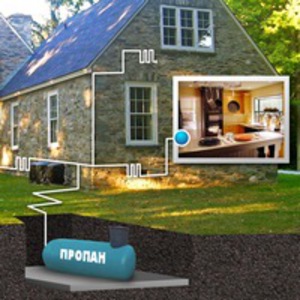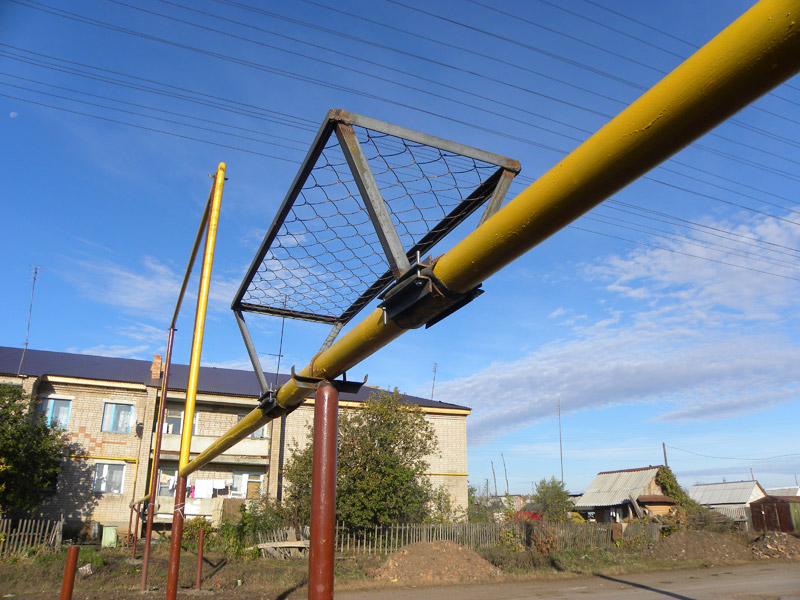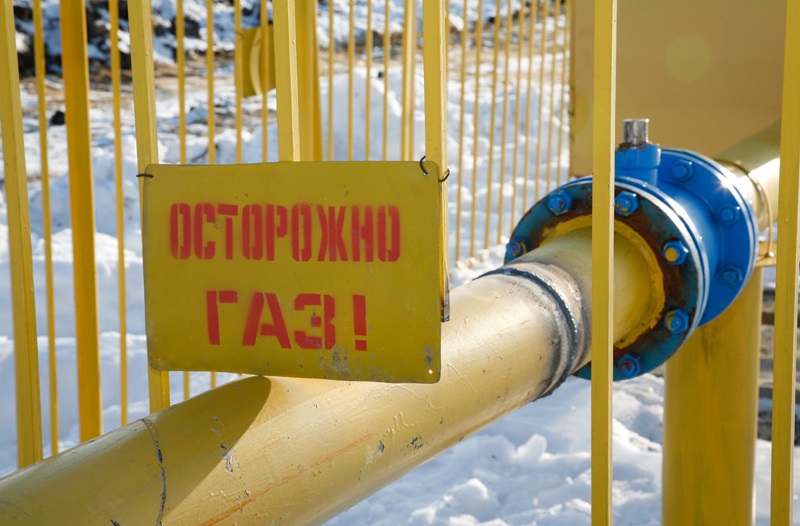Surely, you immediately wondered how much it costs to carry gas into private house, and not in vain, because this procedure is really very expensive and quite lengthy. But, most importantly, it is worth it and pays off in literally 3-4 years. Now more details.
Gasification of a private house: stages, timing.
Stage 1 – preparatory.
Timing: depends on your efficiency.
At the very beginning of your “path”, you should find out who owns the gas pipeline located as close as possible to you (most likely, its owner will be GorGaz, but it is better to clarify this point). Next, you need to collect a certain package of documents and contact this gas pipeline owner with the question of the possibility of a tie-in.
This package includes:
- permission for gasification from the head of the architectural department;
- BTI technical passport;
- topographic survey of the site certified by the local gas service (scale 1 to 500) with a house, communications and gas pipeline recorded on it;
- consent of neighbors if the highway crosses their property;
- documents for the land, as well as confirming your ownership of the house.
Stage 2 – obtaining technical specifications (TU).
Terms: from 2 weeks to a month.
This implies a visit to GorGaz to write an application for obtaining technical specifications. Your application must be accompanied by:
- BTI technical passport;
- your passport;
- documents on ownership of the plot and house;
- cadastral plan.
Stage 3 – preparation of design and estimate documentation, its approval.
Time frame: creating a project - 2 weeks, approving it - up to a month, drawing up an estimate and drawing up an agreement on technical supervision - another couple of weeks, a total of more than 2 months.
Here you will have to turn to third-party organizations for help, since the contractor must have a license to perform such work. Fortunately, today there are countless such companies. Each of them has its own prices, which may differ significantly from each other. For those for whom the price is not too important, but, as they say, the main thing is the result, we recommend checking with GorGaz which design organization they will recommend.
Stage 4 – construction and installation work.
Terms: specified in the contract, usually do not exceed 1 month.
Again, they can only be carried out by organizations with the appropriate license, so at this stage you can save only if you contact the same company that created your project, because most often construction companies that have permission to install a gas pipeline also have a license to install it design.
Stage 5 is the final stage.
Time frame: 5-7 weeks.
When everything installation work will be completed, a special commission is created from representatives of GorGaz, the performing company and you, based on the results of the inspection, if everything is in order, a technical supervision receipt is issued. You pay for it and transfer it to construction organization who cooks technical documents and gives them to GorGaz. You should have your meter sealed within 3 weeks after this. After that, all that remains is to conclude a gas supply agreement with GorGaz, so that in the future you can be calm about the timely maintenance of the gas pipeline and gas equipment.
So, how much does it cost to supply gas to a private home - numbers.
As you can see, it's quite a long process. Even in the most favorable scenario, gas will appear in your home no earlier than 4 months from the moment you start collecting all the documents.
Unfortunately, we cannot tell you the exact cost of gasification of a private house, since there are many factors that have a direct impact on it: where the connection to the gas pipeline is made - within the city or outside it; how pipes are laid; on what terrain, with what relief, etc. However, in general terms, nothing prevents us from orienting you /
So, cutting into a gas pipeline costs 100-400 thousand rubles; design – 15-40 thousand rubles; connection to gas main– from 3.5 to 7 thousand rubles; add to this the cost of gas equipment, fees for obtaining certain documents, and in the end you will get the minimum amount for gasification of a private house of about $4000.
Video.
How to supply gas to a private house? Everyone is thinking about this and a number of other issues related to gasification of private housing. more owners suburban living space.
But why do many people stop at heating with gas, because there are many alternative options: from wood-burning stoves to electric boilers.
The answer is simple:
- gas does not require special storage compared to coal, wood or other types of solid fuel;
- no gas connection required extra space on the site;
- heating and water supply using gas involves the installation of a modern boiler, which is equipped with a control system and automatic protection against pressure build-up, which ensures the safety of the unit;
- By supplying gas to a private house, you can heat a garage, swimming pool and other premises;
- in addition, gas heating is a profitable investment, the cost of a private house with gas heating is rated much higher than without it.
There are several methods of gas heating:
- Connection to the gas pipeline. This method is not suitable for everyone; in some regions and localities, unfortunately, connecting to natural fuel is not yet possible.
- Use of bottled (liquefied) gas. This option is used by many owners of private houses, especially where there is a constant supply of cylinders. Of course, this heating method is not suitable for those who have a private house with an area of more than 200 square meters. m., to heat such an area you need a fair amount of gas tanks. To heat a private house with bottled gas, you will need from 40-60 thousand rubles- this amount will cover the purchase of a boiler, reducer, cylinder and hoses.
- Installation of a gas tank. A gas holder is a special container for storing gas. This option is not bad, but is suitable only for wealthy homeowners. The cost of such storage is not less than 150,000 rubles.
Lately owners of private houses They are increasingly resorting to the first option for connecting gas. This will be discussed later.
Technical documentation for gas supply
The very first thing you should pay attention to is that gas is carried out exclusively in existing house, that is, no one will connect your gas to a plot without a building. But the house does not have to be residential; gas connection to country house quite real. In order for your private home to be connected to natural fuel, a certain package of documents:
- technical passport of the house;
- a document confirming the right of ownership of the site (certificate of ownership);
- certificate of ownership of the house;
- cadastral plan;
- owner's passport.
 The next, no less important step to gas connection Your home is receiving technical specifications
(THAT). This document describes a complete list necessary measures on installation, installation and gas supply. After this, you need develop a project, which must subsequently be agreed upon with the gas trust.
The next, no less important step to gas connection Your home is receiving technical specifications
(THAT). This document describes a complete list necessary measures on installation, installation and gas supply. After this, you need develop a project, which must subsequently be agreed upon with the gas trust.
As a rule, for assistance in preparing all documents, contact special organizations and design institutes that specialize in the preparation of such documents, statements and projects.
It is important to understand that unauthorized connection to the natural fuel pipeline punishable by law. According to Government Decree RF dated July 21, 2008 And Federal law“On gas supply in the Russian Federation”, there are certain rules that regulate the process of connecting and supplying gas to the population.
In 2013, new standards for connecting private houses to natural fuel were approved. Now, in order to supply gas to your site, you need write a statement to the appropriate authority at your place of residence (regional or city gas service department). Some documents must be attached to the application:
- permission for gasification, which must be obtained from the architectural and planning institution at the place of residence;
- if the gas outlet is in common ownership with neighbors, then their written consent is required;
- documents for gas equipment - boiler, convector, etc.;
- chimney inspection report, this document is issued by the housing and communal services service, the Ministry of Emergency Situations or the fire service after the inspection.
No more than 15 working days should pass from the date of submission of the application, when a foreman and a project specialist will come to your site and carry out necessary measurements, surveys, topographic surveys, and also prepare a project.
Given, already finished project You can pay at the cash desk of the gas supply department. According to the new rules, the owner of a private house will not have to look for a contractor on his own; in addition, a certain period has now been set for all work - no more than 3 months from the date of receipt of the application.
If your locality is on the list of objects for gasification, then by law gas to a private home must let down for free. However, in practice, the owners do not wait for funds to be allocated and do all the work at their own expense.
It happens that the gas pipeline is installed only on a neighboring street, in which case you can connect to it, it is best to persuade your neighbors to connect at the same time, then this will cost less. In case your locality There is no gas pipeline; it is possible to install it from a nearby one, but the process will be much more complicated and expensive. In order to pull a gas pipeline from a neighboring village, it is necessary to at least create some kind of partnership and gas control point, something that ordinary busy people cannot do.
What determines the price of connection?
 Tariffs for connecting to natural gas are divided into standard and non-standard.
Tariffs for connecting to natural gas are divided into standard and non-standard.
For the first case, when the distance from a house within the city to the gas pipeline is 10 meters, and outside the city - 25 meters, the cost is charged at fixed rates.
The cost of work depends on:
- type of terrain;
- meter size;
- method of laying a gas pipeline.
In other cases, the cost is calculated separately. In addition, it is worth considering:
- building shape;
- relief of the territory;
- soil quality.
In general, the real cost of connecting a private house to a gas pipeline will be:
- for connection to a gas pipe - 75−135 USD;
- connection of individual elements of the system - 500−3000 USD;
- supplying and inserting a gas pipeline into a building - 1−3000 USD
Despite the high cost of connecting to natural fuel, more and more owners are using gas for water supply and heating of private homes. High demand proves economic efficiency and benefits from use.
2016-03-29 13:09:50
Correctly, advice is given here on which it is better to contact specialists who will formalize everything correctly and receive permission to connect a private house to natural gas. Doing this on your own is very time-consuming and expensive, given our clumsy administrative machine. From my experience, professionals will do it faster. As far as I understand, it is proposed to place the gas holder underground, or is it possible to install the gas holder on the surface of the earth (on an area near the house)?
In order to supply gas to a private home, you need to obtain technical specifications (TU) for gasification, and then contact a specialized organization licensed to carry out work on the design of gas supply systems. The next stage is the approval of the developed project, after which the installation of the gas pipeline itself begins, which is carried out exclusively by specialized enterprises with a license for this type activities. After completion of construction, the customer signs the work acceptance certificate and enters into contracts for the maintenance of gas equipment and gas supply.
The new law on gasification contains updated standards and determines how much it costs to supply gas to a private home.
The list of mandatory documents that must be provided to obtain technical conditions includes:
Copies of title documents for the land plot;
- topographic plan land plot;
- if the planned gas consumption exceeds 5 m3 per hour, you must provide a calculation of the planned maximum gas consumption;
- permission to supply gas to a private house (issued by local architectural and planning institutions);
- in the case of common property with neighbors within the boundaries of the gas outlet - their consent in writing;
- documentation for gas equipment (convectors, boilers, etc.)
- an inspection report for ventilation shafts (chimneys), which can be issued by the housing and communal services service, a specialized organization or the Ministry of Emergency Situations.
Within 15 working days from the date of submission of the application, the necessary measurements and topographic surveys must be carried out on the site to prepare the project.
As a rule, either gas, solid fuel (wood, coal) or electricity are most often used for heating private houses. Cost of obtaining 1 Gcal (gigacalories) of heat from combustion natural gas is about 500 rubles, while the production of 1 Gcal by an electric boiler will cost 2,500 rubles. For example, on average for heating a private house total area which is at least 150 m2 per heating season about 60 Gcal is required, which when using natural gas will be about 30,000 rubles, while using an electric boiler will cost at least 150,000 rubles (the cost of connecting gas to a private house is 20,000-50,000 rubles). The costs for heating with gas will be approximately the same as for heating with coal, however, compared to gas heating, it has a number of disadvantages - the need for additional storage space, transportation, and human participation in the heating process. Therefore, the most rational solution is to supply gas to the house.

The main factor that makes connecting gas to a private home profitable is the low cost of this type of fuel. The cost of connecting gas and the cost of a gas connection project to a private home pays off in 5-8 years.
There are two types of gasification of private houses: centralized (from main gas pipelines) and autonomous, where special tanks - gas holders - are used as gas sources. The first option is considered more acceptable, since in this case gas is supplied to a private house in a shorter time than with autonomous gasification.
Central gasification can be of two types: underground and above ground. The advantage of underground gas pipeline construction is a longer service life of the pipes and more reliable protection from damage. At the same time, underground gas pipeline installation is 25-30% more expensive than above-ground construction, and when repairing it, in some cases, it is necessary to obtain special permits for excavation work.

The process of gasification of a private home begins with the preparation of documentation. Documents for connecting gas to a private house are necessary in order to develop and approve a project for connecting gas to a private house. The first stage in the preparation of documents is the issuance of technical specifications for gasification. Documents for gasification of a private house are conventionally divided into two types: those that are needed to supply gas to a house under construction, and those when it is necessary to gasify an already residential building.
